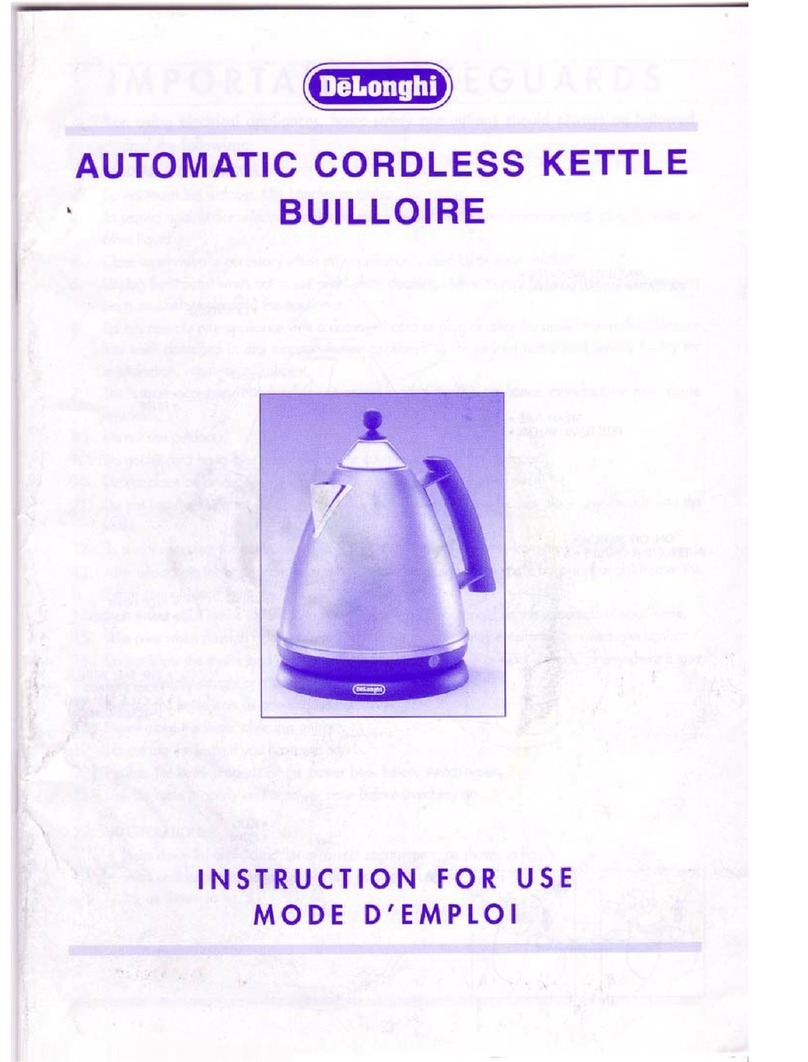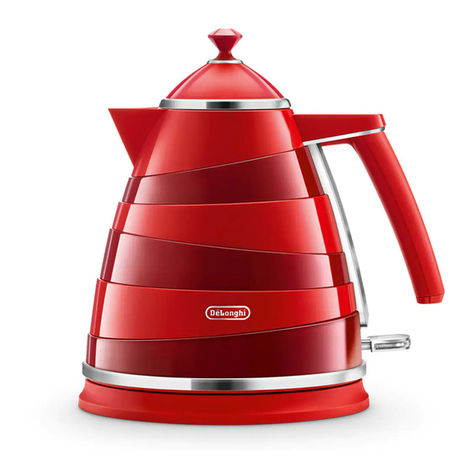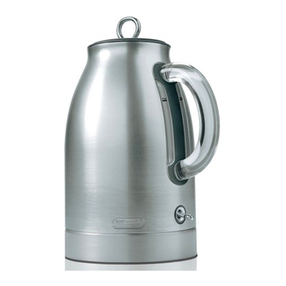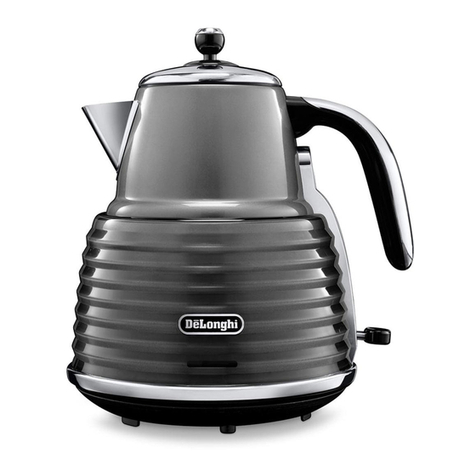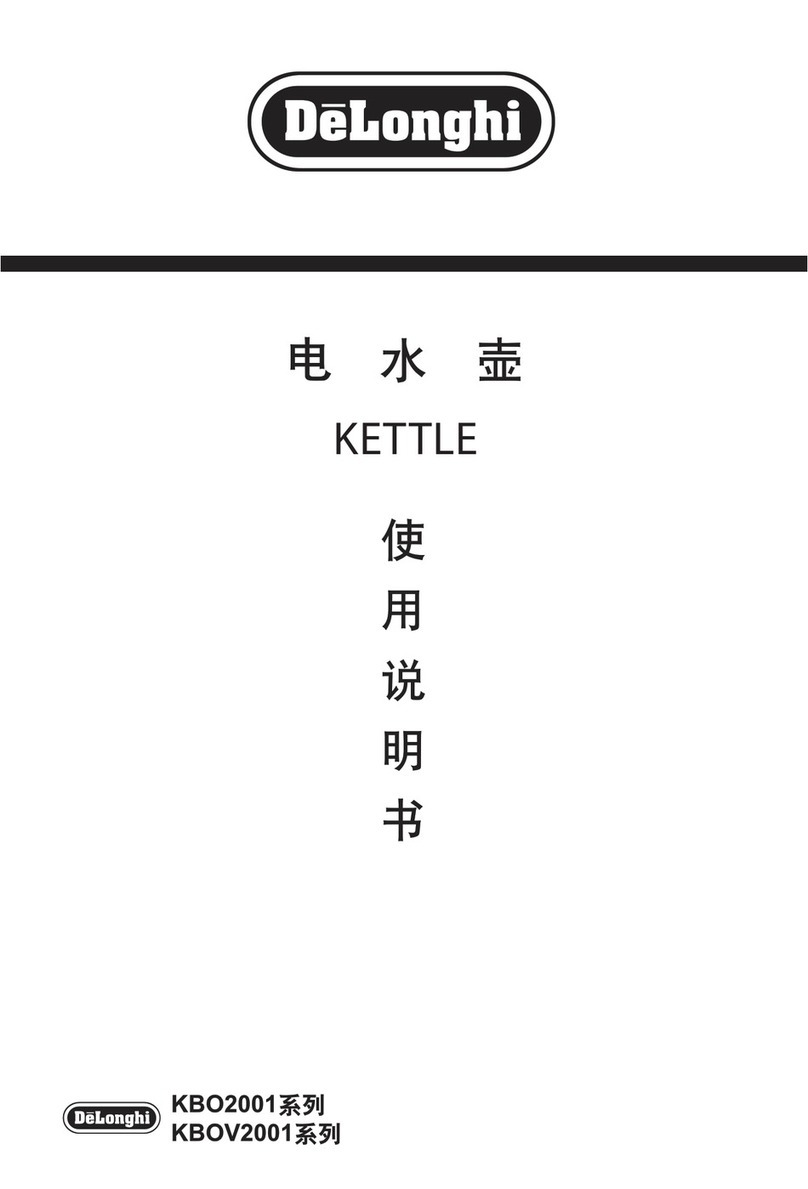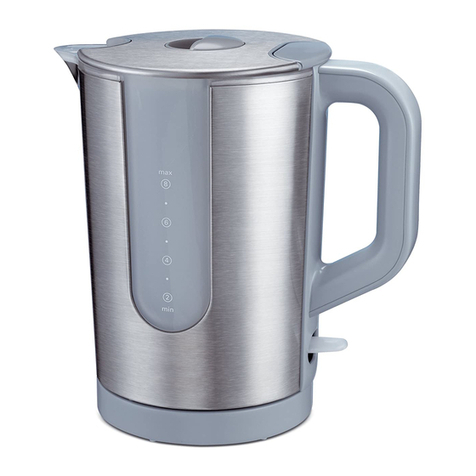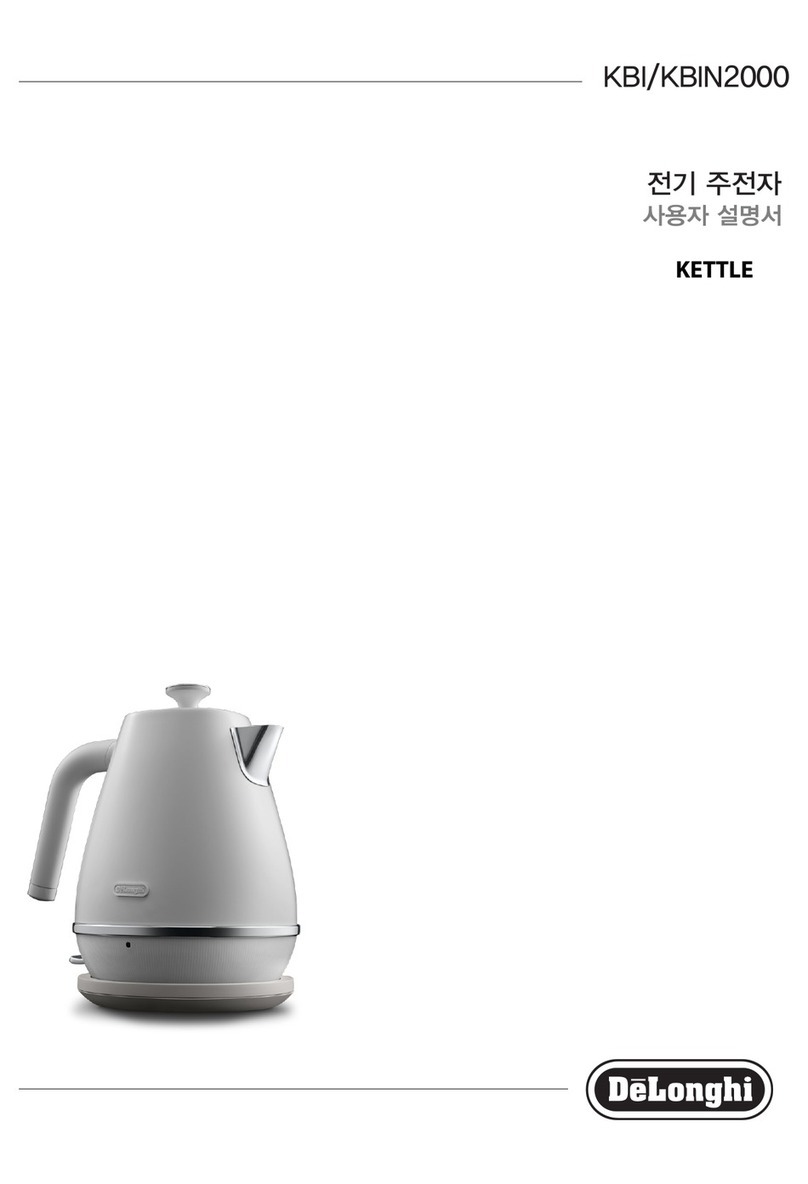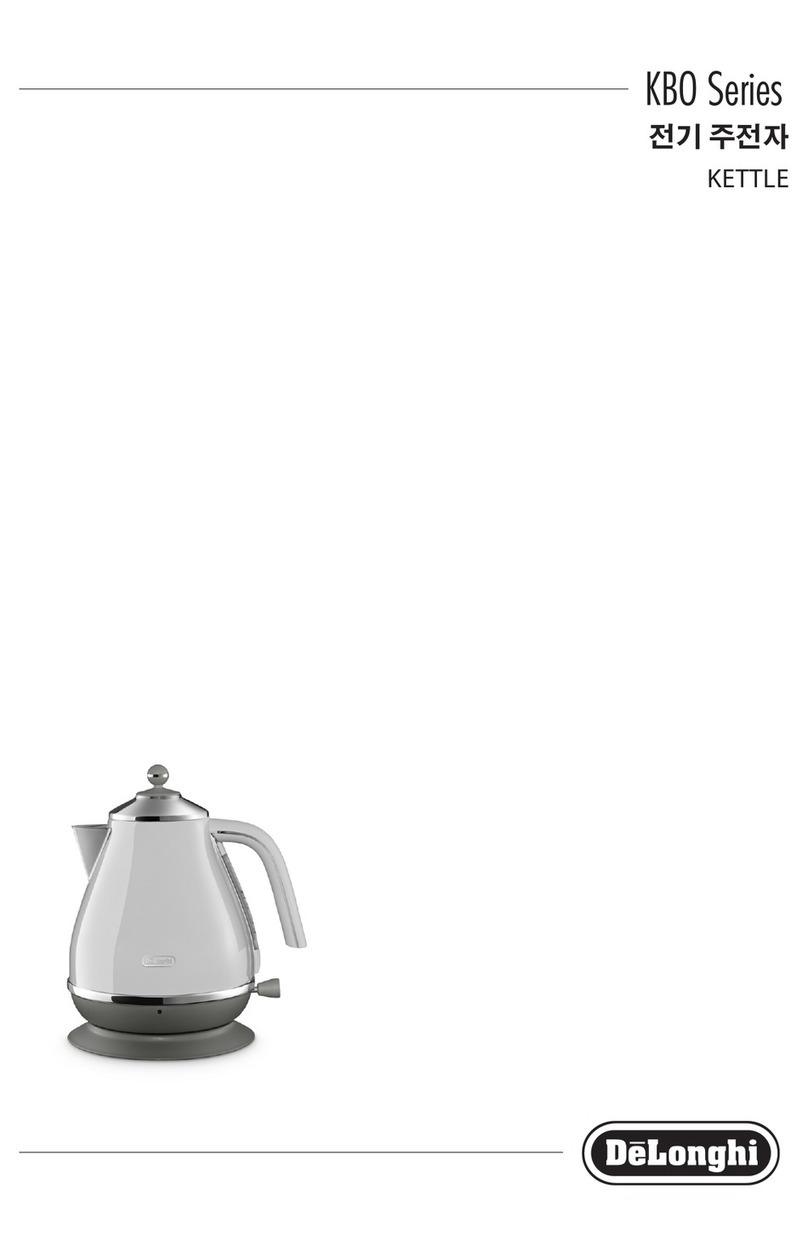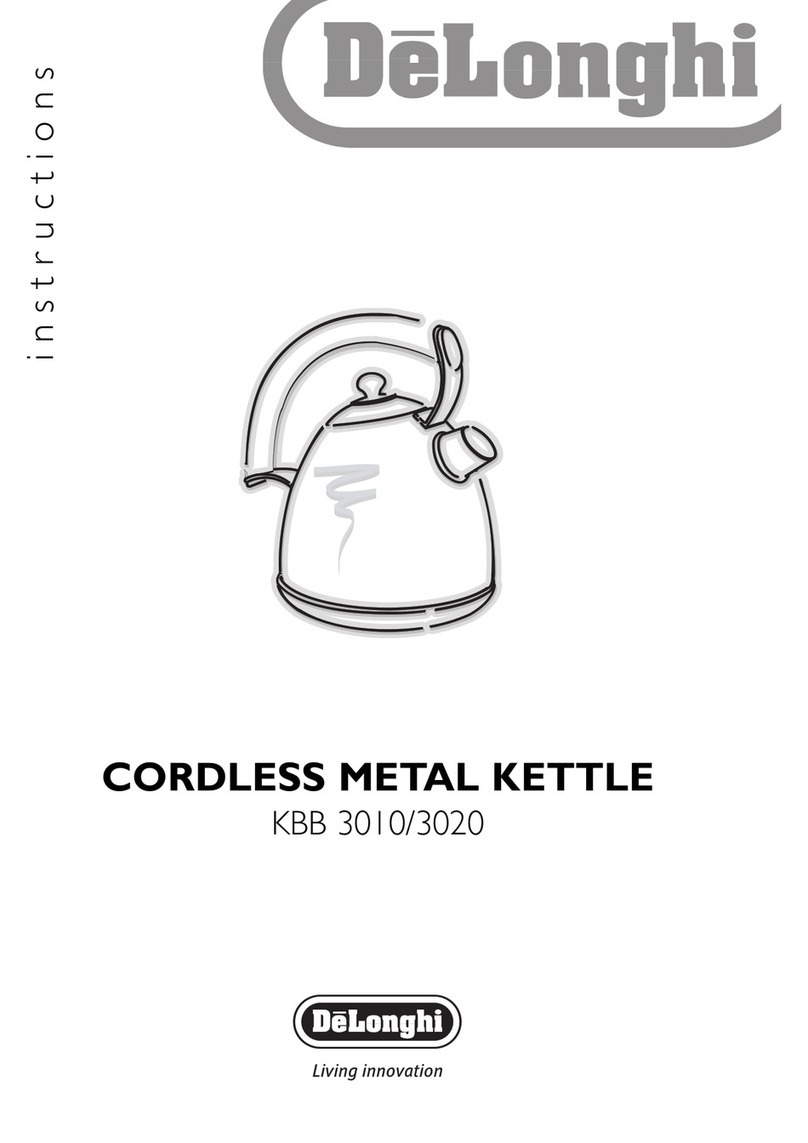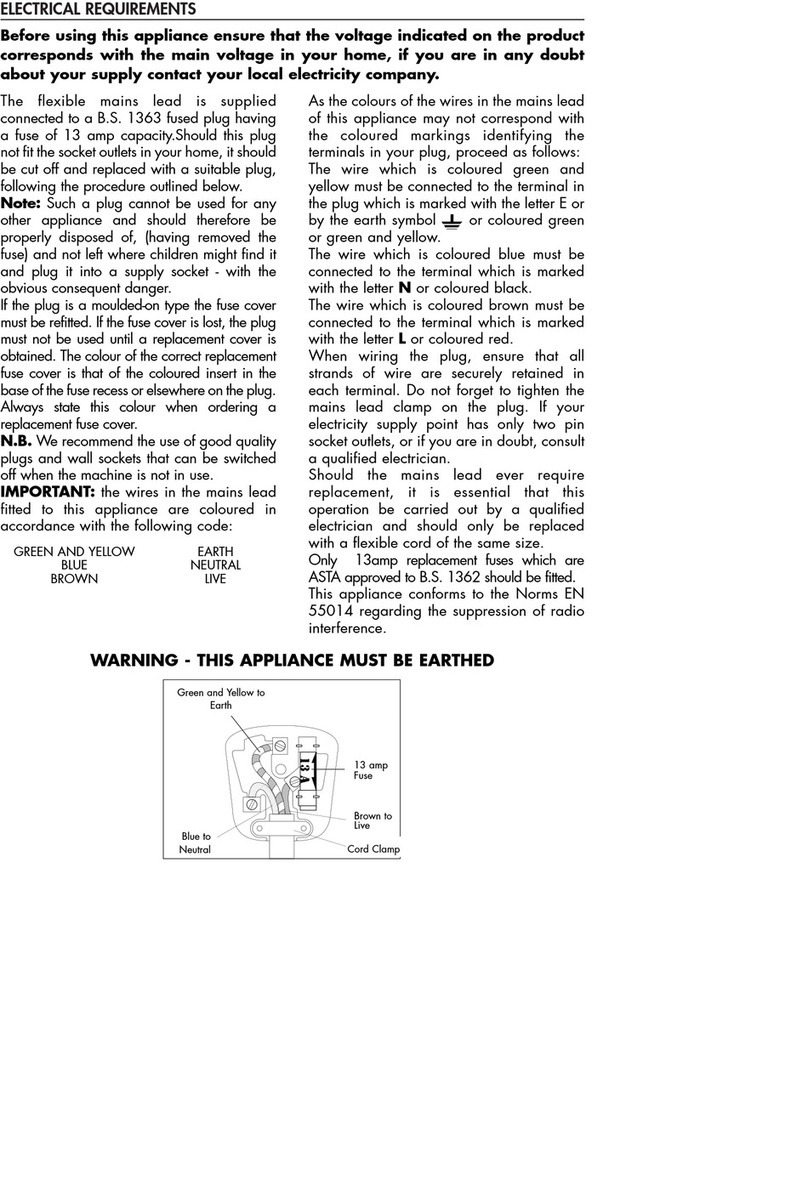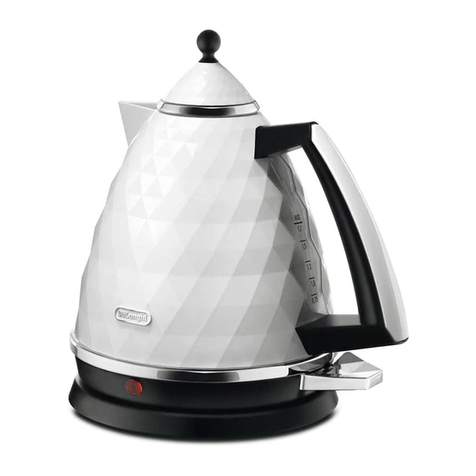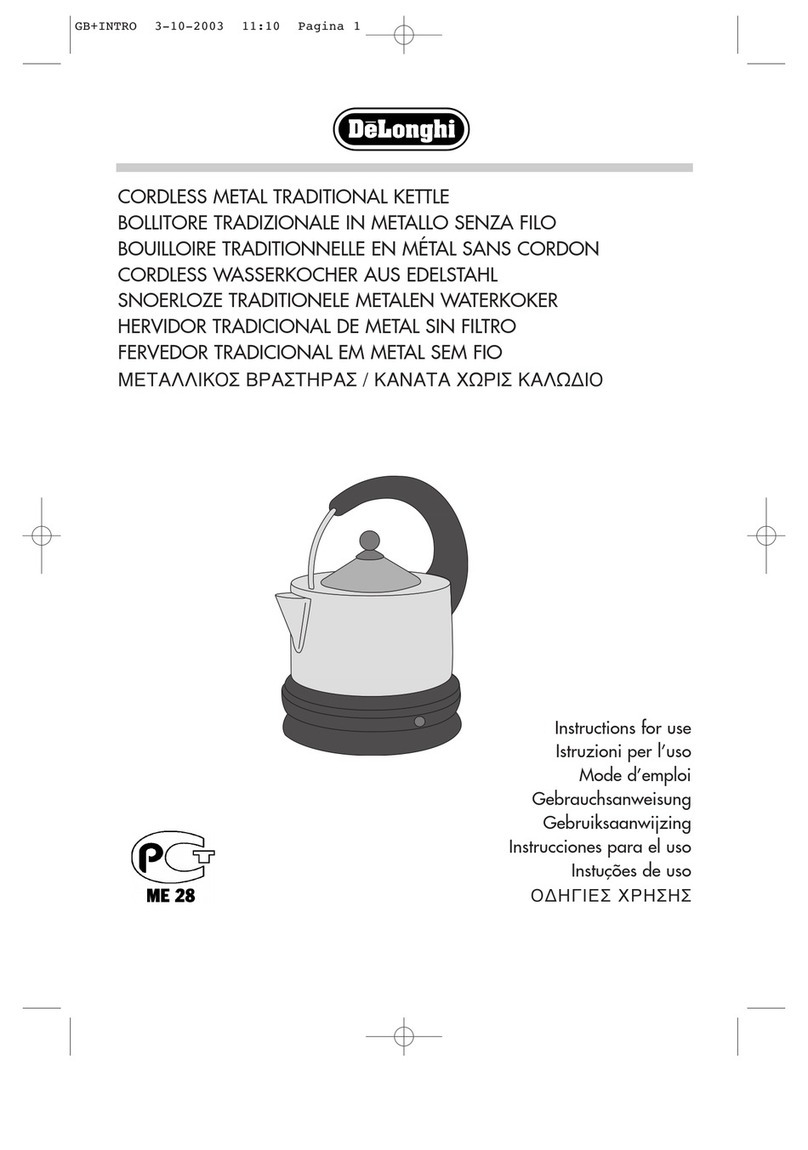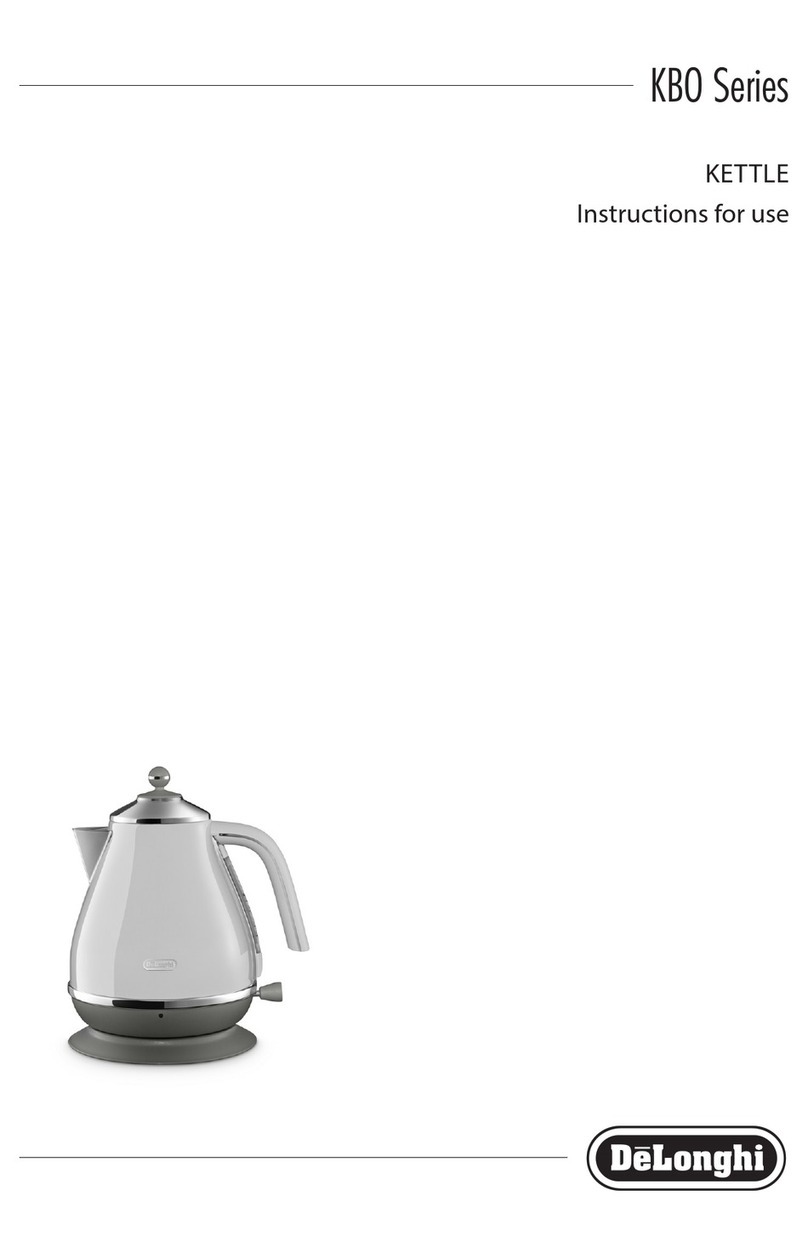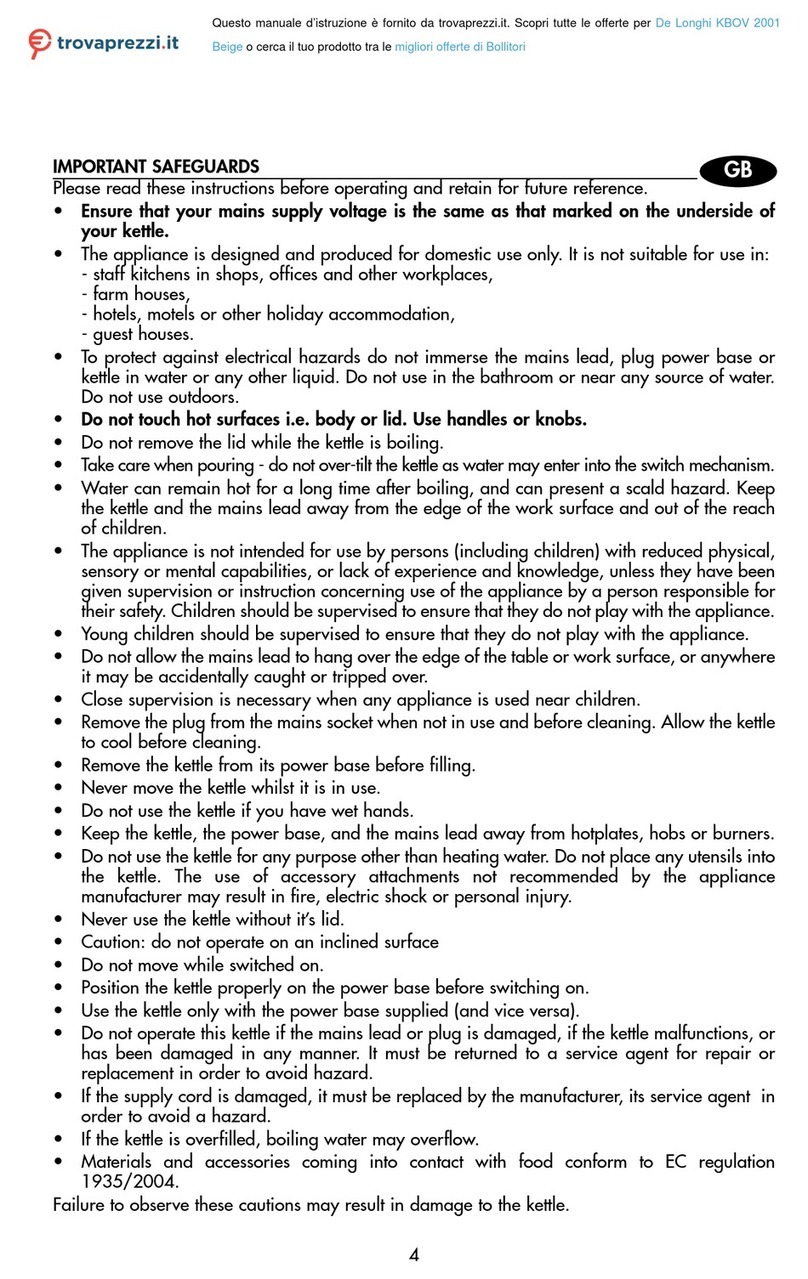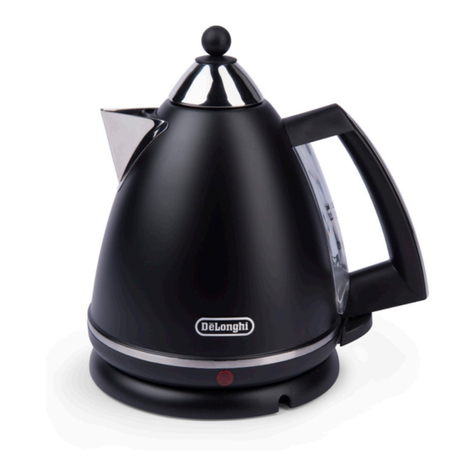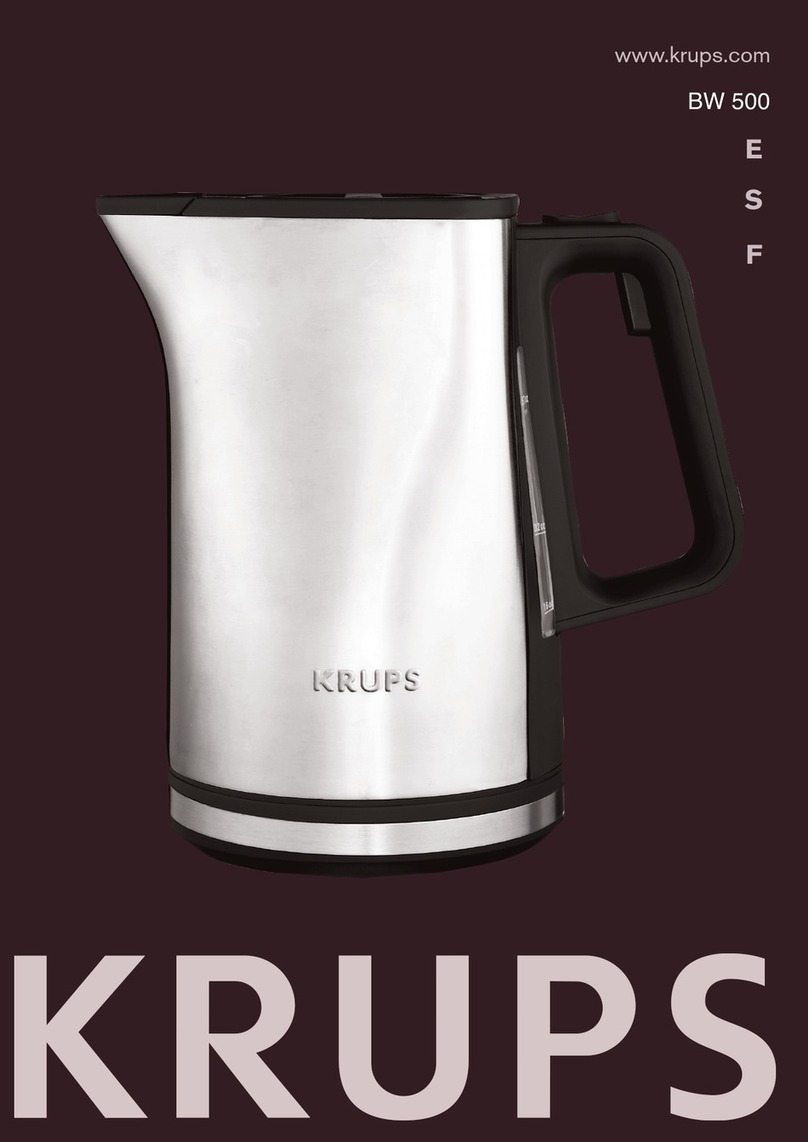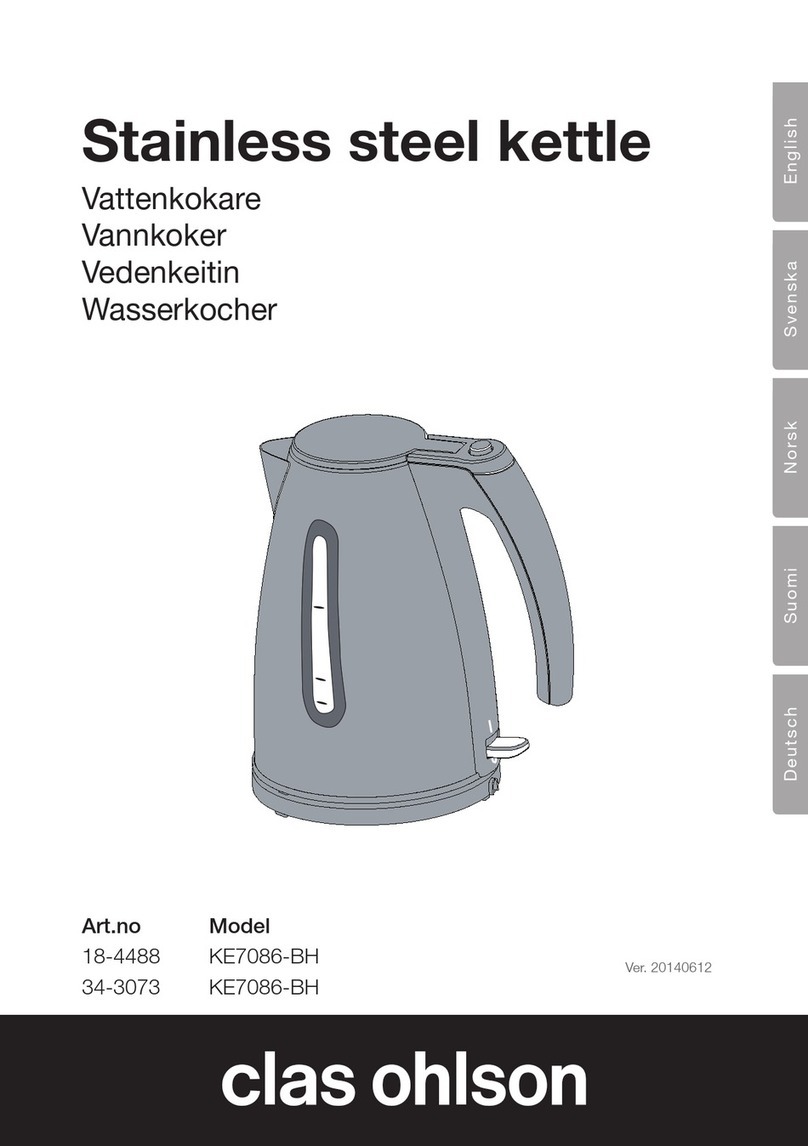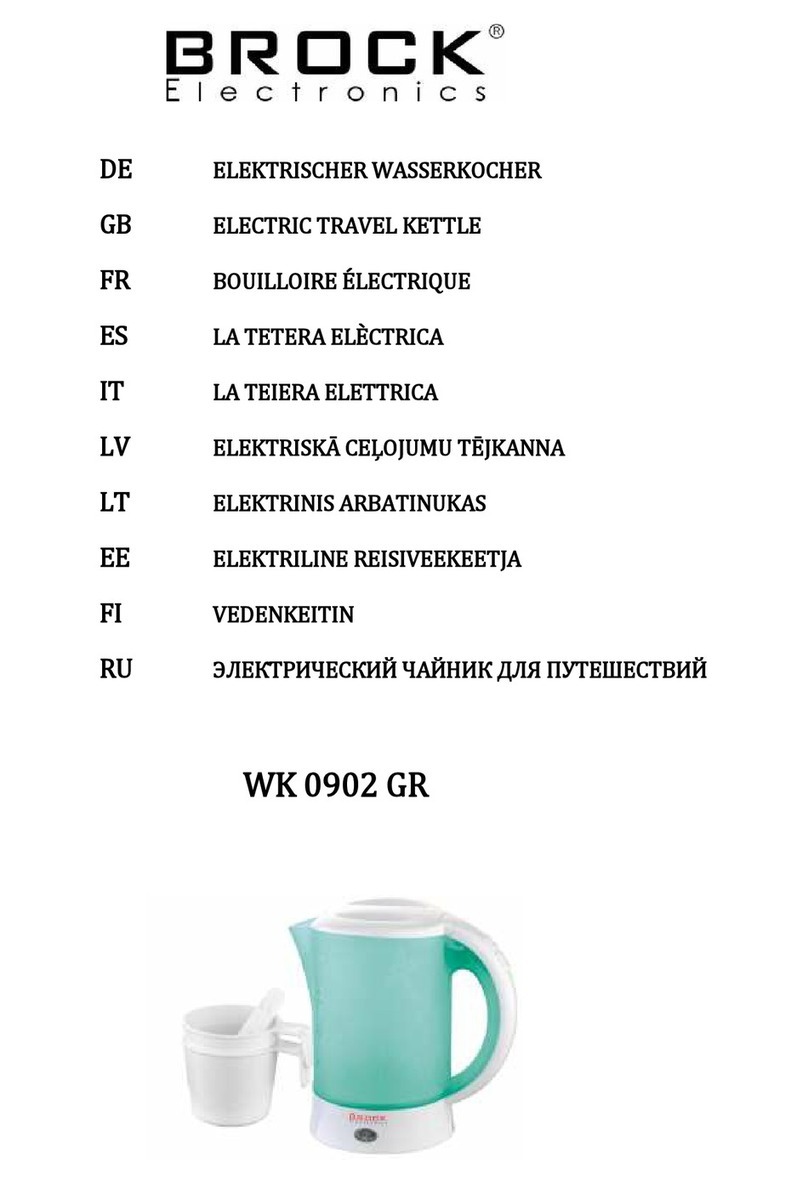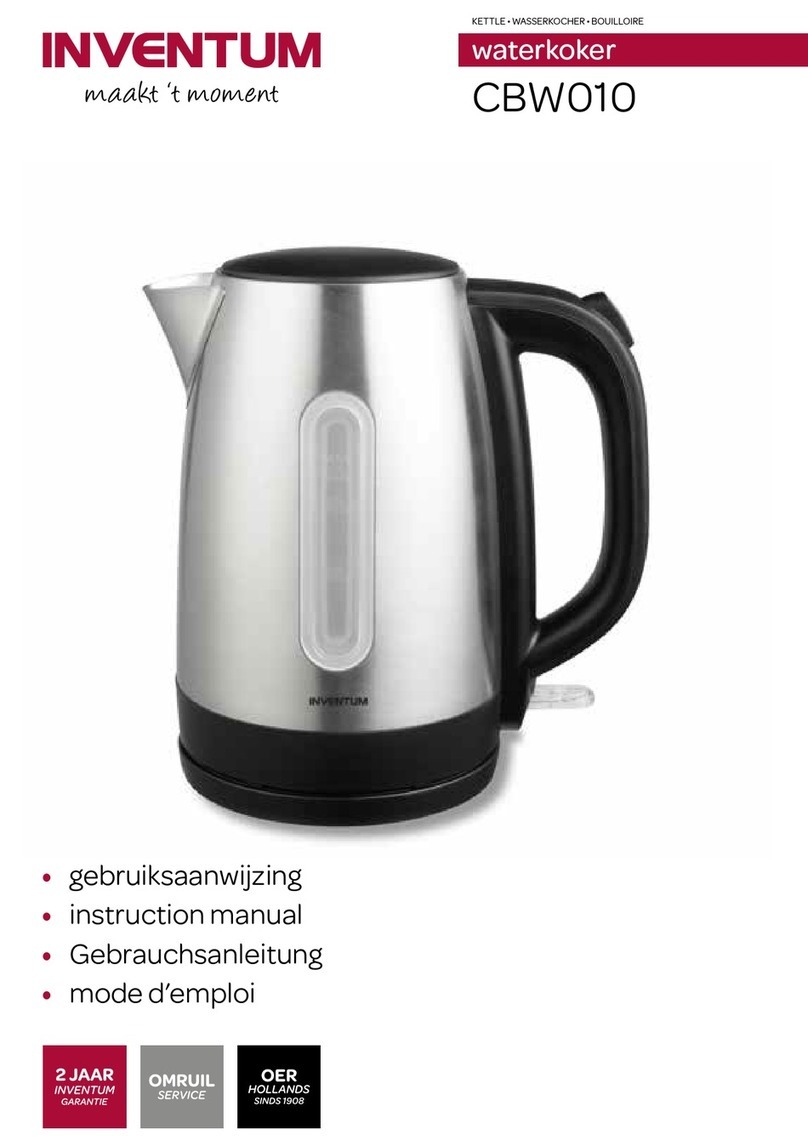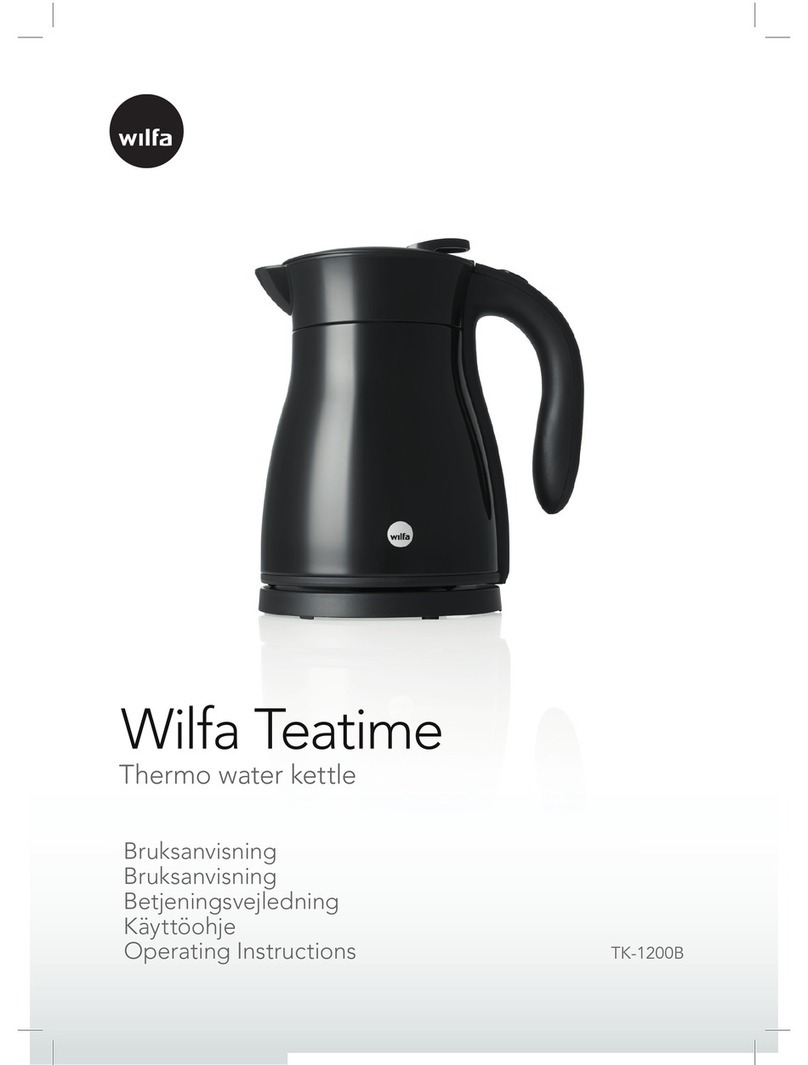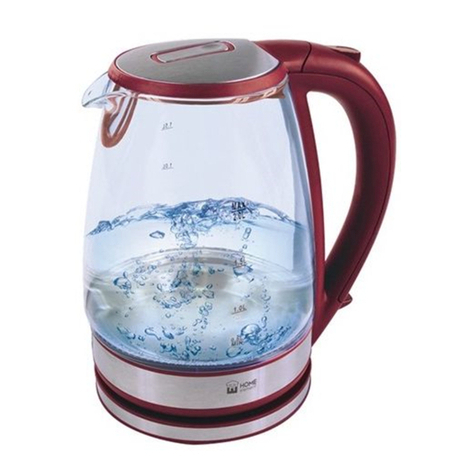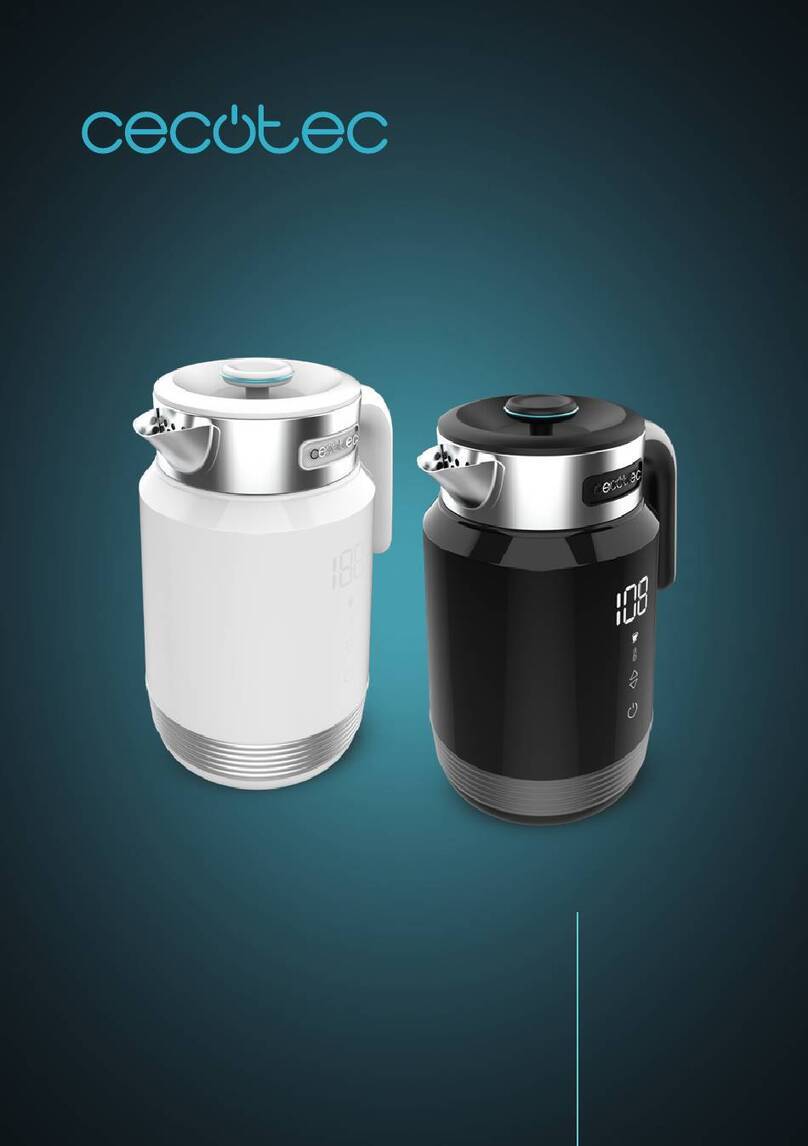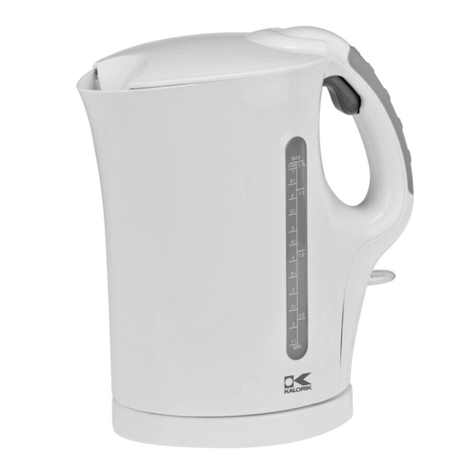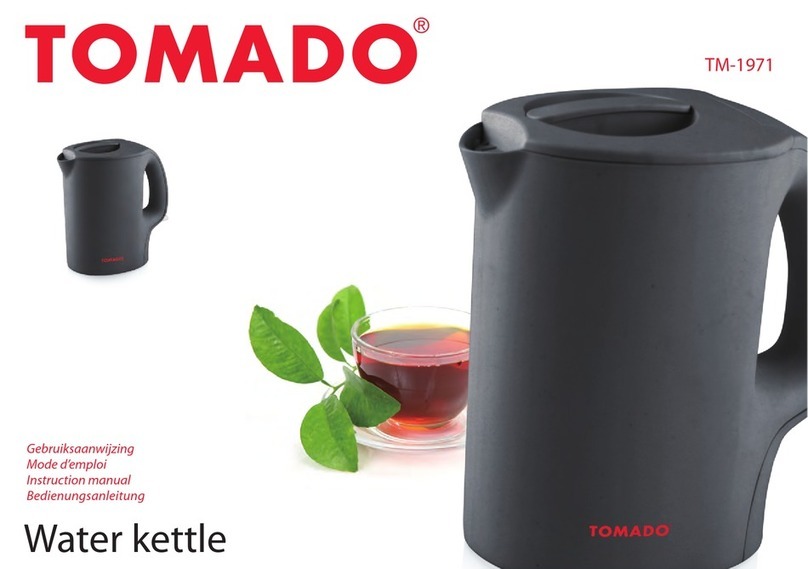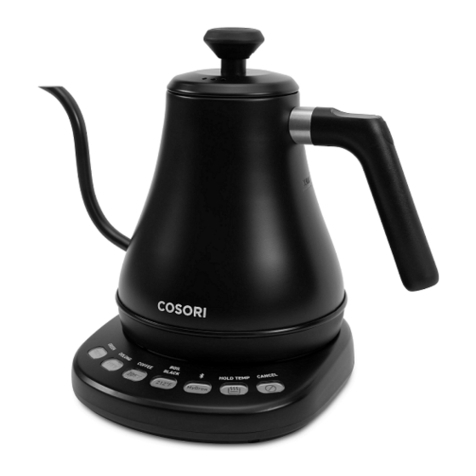
5
• The water level indicator enables you to see the quantity of
water in the kettle.
Switching on
• Plug the power base into the mains socket.
• Place the kettle on the power base.
• Press the ON/OFF switch down to switch the kettle on.
• The power-on indicator lights will illuminate.
• The kettle will automatically switch o once the water is
boiled (the ON/OFF switch will click upwards and the lights
will switch o ).
• To turn the kettle o before the water boils, you may move
the ON/OFF switch up to the OFF position, or simply lift the
kettle from its base - it will switch o and the switch will
return to the OFF position automatically.
Pouring
• Remove the kettle from the power base and carefully pour
out the water. Do not tilt the kettle suddenly or pour water
out at too sharp an angle.
• When you lift the kettle from the base, you may see moistu-
re on the top surface of the base. Condensation on the base
is perfectly normal, and should not be a cause for alarm.
Safety devices
1) Automatic ON/OFF switch
Your kettle is tted with an ON/OFF switch which automa-
tically switches o once the water has boiled. If the kettle
has just boiled, wait a minute or so before re-boiling the
kettle. Do not attempt to hold the ON/OFF switch in the“on”
position or adjust the switch mechanism.
2) Safety cut-out
If the kettle is switched ON with too little or no water, it is
protected against damage by a safety cut-out device which
will switch o the power.
If this cut-out operates, disconnect the kettle from the
mains supply and leave to cool down before relling with
cold water (otherwise the element could be damaged). It
will reset automatically when cooled down.
3) If the kettle is lifted from the base while operating (ON), it
will automatically switch o.
Cleaning and maintenance
Cleaning the kettle
• Allow the kettle to cool down fully and disconnect the ap-
pliance from the mains before cleaning.
• Do not immerse the kettle or base in water.
• Use a soft dampened cloth to wipe the outside of the kettle
and dry with a soft, dry cloth.
• DO NOT use harsh scouring agents.
• Ensure that all electrical connectors and sockets are kept
dry.
Scale
Scale is mainly calcium carbonate (chalk), a harmless, naturally
occurring mineral found in most water supplies. “Hard” water
contains more of this mineral than“soft”water.
When the water is heated, the minerals in the water solidify,
making the water appear cloudy. These minerals form a thin lm
on the walls, element and on the surface of the water. The water
may look like it has white coloured pieces of plastic oating on
the surface. On traditional kettle elements, scale forms a hard
white “crust” which adversely aects performance and reduces
the life of the element. As soon as you notice a lm forming on
the water, or on the interior walls of the kettle, simply rinse the
kettle and wipe it out.
Scale lter
Your kettle is tted with a scale lter to prevent loose particles
of scale being poured into your beverage. This lter is both re-
movable and washable. The frequency with which you will need
to clean any scale deposits from your lter will depend on the
hardness of water in your area and how often you use the kettle.
You should remove and clean the water lter when you notice
any deposits being left on the lter or if the pouring eciency
is impaired.
Removing the scale lter
• Allow the kettle to cool down fully.
• Disconnect the appliance from the mains electrical supply.
• Make sure that your hands are clean and free from soap, etc
or anything which might taint the water.
• Empty the kettle
and remove the lid.
Remove the lter
by pushing down
the catch rmly,
then lift up from
inside the kettle
(g. 2).
• Rinse under a tap
while brushing
2
